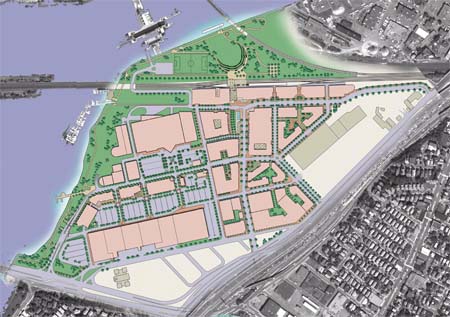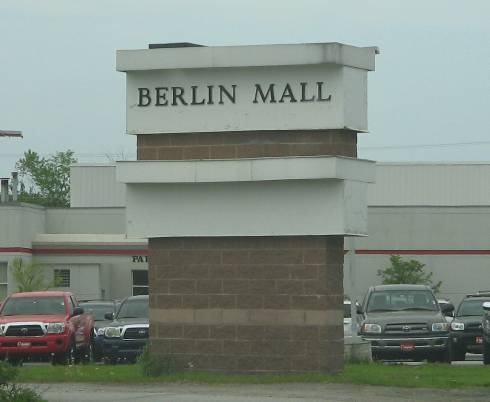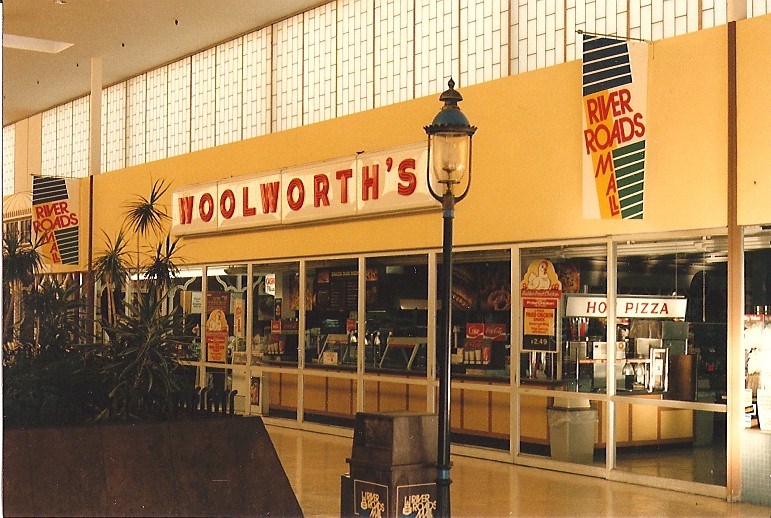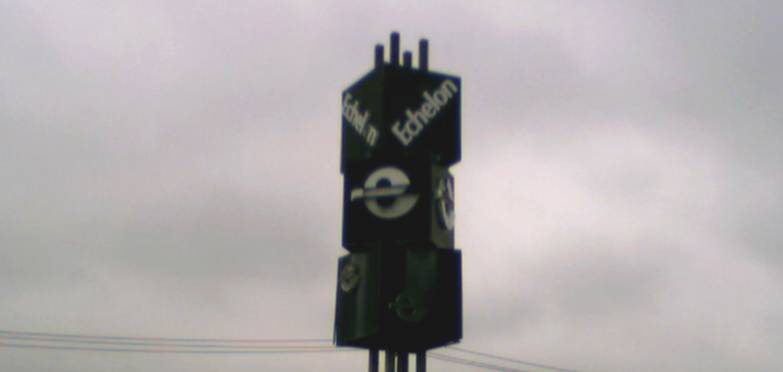 The redevelopment of the Assembly Square Mall has been long and complicated, but the first chapter has been written after years of delay.
The redevelopment of the Assembly Square Mall has been long and complicated, but the first chapter has been written after years of delay.

The Assembly Square Mall in Somerville, Massachusetts, opened in 1981 inside of a former Ford Motors Assembly Plant along the banks of the Mystic River. The site had more recently been a distribution center for First National Supermarkets (who were later Finast, later Edward’s, then bought by Stop & Shop). A Jordan Marsh store located in Malden Center relocated to the northern end of the mall, and a Kmart store anchored the southern end of the center. At 340,000 square feet, it was like many smaller “dumbell” style malls of its era, with an anchor at each end of the mall and a straight hallway between, with a food court in the center that was likely added at a later date. At the time it was lauded as a creative reuse of a former industrial property. Sometime later (probably the early 1990s), a big box center with Home Depot and Circuit City was added to the site, with frontage along I-93. You can see a satellite view of the mall property here, with the Home Depot and Circuit City building towards the bottom of the frame at New Road and Mystic Avenue.
By all accounts, Assembly Square did quite well until 1997. In 1996, Macy’s acquired the local Jordan Marsh chain and re-branded their stores as Macy’s. Macy’s and Kmart made for strange bedfellows in this little mall (as did Kmart and Jordan Marsh, frankly), but Macy’s must’ve felt it wasn’t worth keeping this undersized store open, and it closed. I first visited two years later, in 1999, and by that time the mall was hurting severely. It felt as though the mall died very, very quickly as it still had updated storefronts from many recognizable national chains (Gap, CVS, etc.) but they had gone dark. The food court was almost completely empty. Mall management had blocked off the entire half of the mall leading from center court to the former Macy’s, and a Building 19 junk store was preparing to open in the former Macy’s, without mall access. It was surprisingly empty, given that, aesthetically, it was a reasonably nice mall. It was bright, with high ceilings and skylights and planters, and felt thoroughly modern inside. Similarly, parts of the interior were still a reflection of the building’s heritage as a factory, with many exposed beams and architectural elements, especially inside of the Kmart store.
Within six months, the mall would be shuttered, and Kmart would renovate their store, removing these very architectural details. Building 19 occupied the former Macy’s/Jordan Marsh, where it was possible to walk around and see the old jewelry counters and even old carts from inside the mall being used as store displays. Until 2004, it was possible to walk through Building 19 to the mall entrance and look through the glass doors down the vast expanse of empty mall.
These pictures were taken with my camera phone (sorry!) in early (February?) 2005, when construction was just beginning on the Assembly Square Mall. Note the still-quite-clear “Jordan Marsh” labelscar in one of these shots, as well as the boarded up McDonalds, which had a greenhouse seating area adjacent to the food court entrance of the old mall.






May 2005, when the building was completely torn apart:



The redevelopment of Assembly Square has been complicated and politically-loaded, which is part of why it’s already dragged on for seven years. Unlike most dead malls, Assembly Square is located in an area with a shortage of buildable land and high property values, only a couple miles from downtown Boston and near a variety of transportation corridors. There’s been a major tug of war between one small residents group, the Mystic View Task Force, the city of Somerville, and the developers about what should be done with the site. At the root of it was a proposed IKEA store, along with whether *any* big box uses should’ve been permitted at the site. The Assembly Square Mall site is located on the banks of the Mystic River, adjacent to mass transit (though there is not currently a stop), and only a few miles from downtown Boston. It’s often been remarked that Fenway Park is closer to downtown than Assembly Square.
There have been a variety of plans to develop the property, and they’ve changed dramatically over the years. Most involve incorporating some big box with denser, pedestrian friendly development organized around a gridwork of streets and facing towards the river. I doubt this is the last time Labelscar will be posting about this mall, because it’s a major redevelopment story here in the Northeast, and the battle is far from over.

As it stands today, the original mall building has been transformed into a relatively attractive big box center, complete with the very snazzy pylon (shown at the top of this post) facing route 28. The former Jordan Marsh/Macy’s has been converted to a Christmas Tree Shop and Staples, and the remainder of the mall has been carved into A.C. Moore, The Sports Authority, Bed Bath and Beyond, and TJMaxx ‘N More.
Note the former Jordan Marsh (Macy’s, Building 19, etc.) in early 2005, versus today:



Other photos of the center today, including the outbuildings:





Prangeway: Here are some photos I took of then-shuttered Assembly Square Mall on August 24, 2001. Notice the inside of Building 19. It’s apparent they never did anything to renovate or alter in any form the former Jordan Marsh/Macys space; they simply just put out their junk for sale and that was that. Also note the several pictures into the then-shuttered mall: one is looking from the Building 19 anchor into the mall, and the others are looking inside doors which were open that day due to construction work on the mall. We were very curious about the work and conjectured that possible activity such as demolition or even re-operning of the property was imminent. However, nothing happened – the mall remained closed and sat quietly until it was demolished in 2005.











































































































































